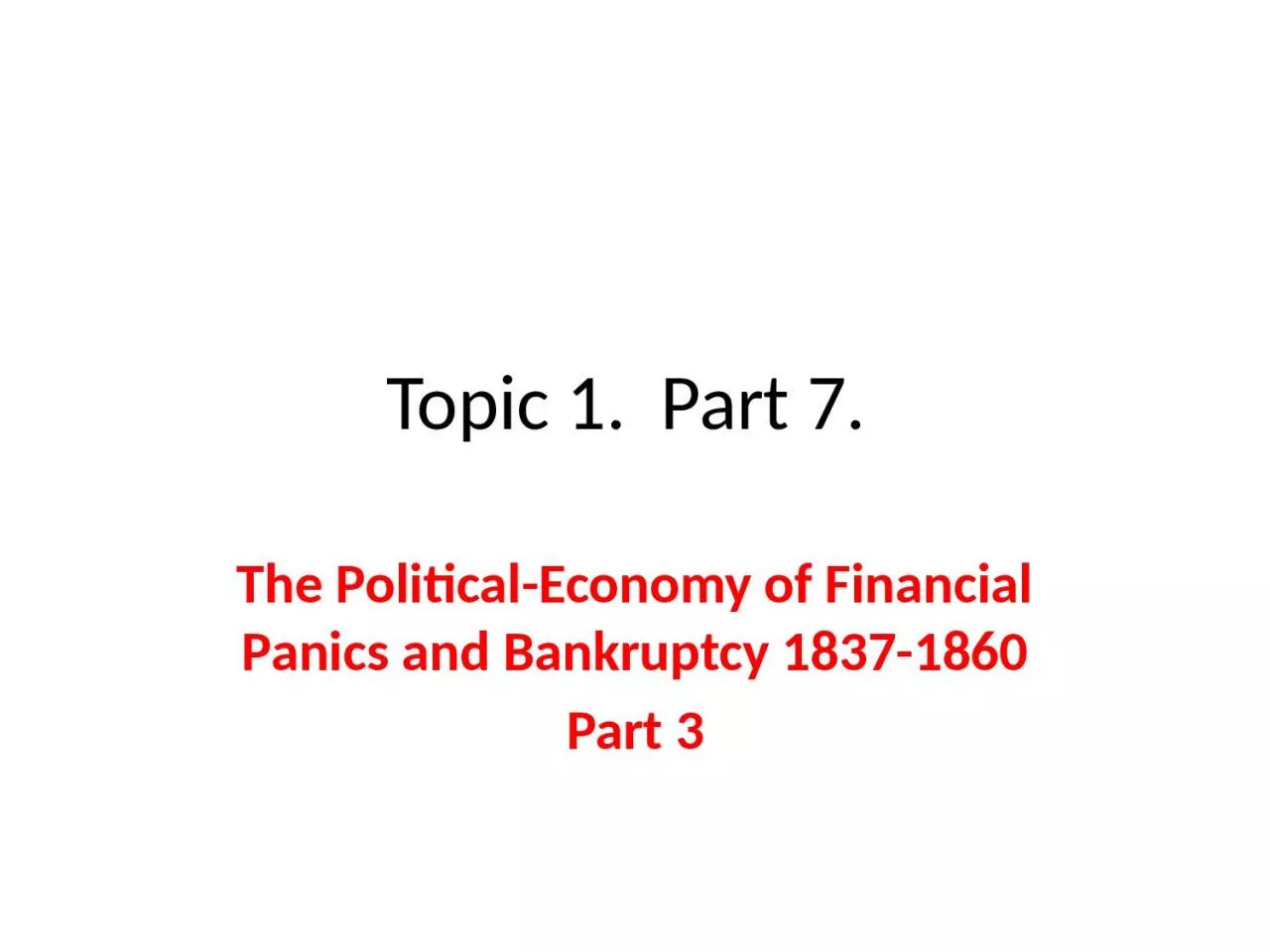PPT-Topic 1. Part 7. The Political-Economy of Financial Panics and Bankruptcy 1837-1860
Author : felicity | Published Date : 2024-01-29
Part 3 The Panic of 1857 Bank Runs and an International Crisis The immediate event that touched off the panic in the USA was the failure of the New York branch
Presentation Embed Code
Download Presentation
Download Presentation The PPT/PDF document "Topic 1. Part 7. The Political-Economy..." is the property of its rightful owner. Permission is granted to download and print the materials on this website for personal, non-commercial use only, and to display it on your personal computer provided you do not modify the materials and that you retain all copyright notices contained in the materials. By downloading content from our website, you accept the terms of this agreement.
Topic 1. Part 7. The Political-Economy of Financial Panics and Bankruptcy 1837-1860: Transcript
Download Rules Of Document
"Topic 1. Part 7. The Political-Economy of Financial Panics and Bankruptcy 1837-1860"The content belongs to its owner. You may download and print it for personal use, without modification, and keep all copyright notices. By downloading, you agree to these terms.
Related Documents














